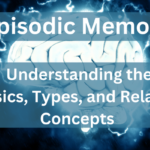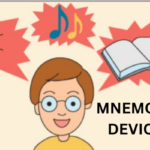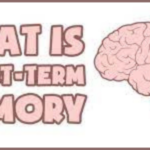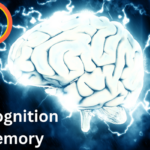Semantic Memory: The Key to Storing and Retrieving Information
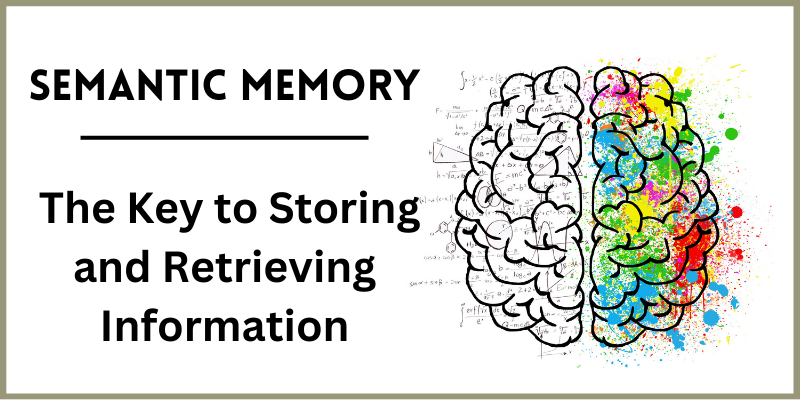
Introduction
In this article we will learn all bout Semantic Memory. As humans, our ability to store and retrieve information is vital to our daily lives. From remembering our own name to recalling a specific event that happened years ago, our memory plays an essential role in shaping our personal and social identity.
However, not all memories are created equal, and the way in which we store and retrieve information is largely influenced by our semantic memory. In this article, we’ll explore the concept of semantic memory, how it functions in our brain, and its impact on our daily lives.
Understanding Semantic Memory
Semantic memory is the part of our memory that stores our knowledge and understanding of the world. It’s the mental dictionary of concepts, facts, and general knowledge that we have acquired throughout our lifetime. This type of memory helps us understand language, recognize familiar faces, and make connections between ideas and experiences.
Unlike other forms of memory, such as episodic memory (which stores specific events or experiences), semantic memory is more abstract and general. It stores information about things like the properties of objects, the meaning of words, and the relationships between concepts. This type of memory is also known as declarative memory, as it involves the conscious recollection of facts and knowledge.
The Role of Semantic Memory in Information Processing
Semantic memory is an essential component of our cognitive system and plays a vital role in our ability to process and interpret information. When we encounter new information, we use our semantic memory to integrate it with our existing knowledge and create meaningful connections. For example, if we learn a new word, we use our semantic memory to understand its meaning and link it to other related words or concepts.
Semantic memory also plays a crucial role in language comprehension and production. When we hear or read a sentence, our semantic memory helps us understand the meaning of the words and interpret the message conveyed. Similarly, when we speak or write, our semantic memory helps us retrieve the appropriate words and phrases to express our thoughts and ideas accurately.
The Brain Mechanisms Involved
The brain mechanisms involved in semantic memory are complex and involve multiple areas of the brain. Studies have shown that the temporal lobes, particularly the left hemisphere, are essential for semantic memory processing. The hippocampus, a structure located in the medial temporal lobe, is also involved in semantic memory, particularly in the initial encoding of new information.
Functional neuroimaging studies have identified a network of brain regions that are active during semantic memory tasks. These regions include the left inferior frontal gyrus, the left middle temporal gyrus, and the left angular gyrus. These areas are thought to be involved in various aspects of semantic memory processing, such as language comprehension, concept representation, and semantic integration.
What Is The Impact on Our Daily Lives?

Semantic memory plays a crucial role in our daily lives, from helping us understand language to facilitating social interaction. It allows us to recognize familiar faces, remember important dates, and make connections between ideas and experiences. It also enables us to engage in abstract thinking, solve problems, and make decisions based on our knowledge and understanding of the world.
As we age, our semantic memory may decline, leading to difficulties in language comprehension and retrieval of general knowledge. However, research has shown that engaging in mentally stimulating activities, such as learning a new language or playing an instrument, can help maintain and even improve our semantic memory function.
What is Episodic vs Semantic Memory?
Episodic and semantic memory are two distinct types of long-term memory:
- Episodic memory involves the storage and retrieval of specific events or experiences, such as a childhood memory or a recent vacation.
- Semantic memory, on the other hand, involves the storage and retrieval of general knowledge and understanding of the world, such as knowing that Paris is the capital of France or that dogs are mammals.
Here are some key differences between episodic and semantic memory:
- Episodic memory is more focused on personal experiences and is context-specific, while semantic memory is more general and abstract.
- Episodic memory is more easily forgotten over time, while semantic memory is more durable and less prone to forgetting.
- Episodic memory is typically associated with the hippocampus and other temporal lobe structures, while semantic memory is more distributed across the brain, involving multiple cortical areas.
- Episodic memory tends to decline more with age, while semantic memory is relatively stable.
Understanding these differences can help us better appreciate the role of long-term memory in our everyday lives and the ways in which it can change over time.
What Belongs to It?
Semantic memory is a type of long-term memory of our semantic memory function. By understanding the role of semantic memory in information processing and its impact on our daily lives, we can appreciate the importance of this type of memory and take steps to maintain its function as we age. that stores general knowledge and understanding of the world. Some examples of what belongs to semantic memory are:
- Concepts: knowledge about abstract ideas, such as love, justice, or democracy
- Facts: information about historical events, scientific discoveries, or cultural traditions
- Categories: classification of objects or events based on their shared features, such as animals, tools, or sports
- Rules: principles or guidelines for behavior, such as social norms, traffic laws, or grammar rules
- Schemas: mental frameworks or models that organize and interpret information, such as stereotypes, scripts, or models of relationships
- Meaning: understanding of the meanings of words, concepts, or symbols in a language or culture.
All of these pieces of knowledge contribute to our overall understanding of the world, and are stored in semantic memory for later retrieval and use.
What Are the 2 Types of Semantic Memory?
The two types of semantic memory are general knowledge and concepts. General knowledge involves factual information about the world, such as the names of countries, the meaning of words, or historical events. Concepts, on the other hand, refer to our understanding of categories and relationships between objects, such as knowing that a bird is a type of animal and that it has wings for flying. Both types of semantic memory play a crucial role in our ability to understand and interact with the world around us.
What Is an Example of Semantic Memory Loss?
An example of semantic memory loss is when an individual has difficulty remembering general knowledge and facts about the world, such as the names of common objects, famous people, or historical events. They may also have trouble understanding the meanings of words or concepts, and may struggle with language comprehension.
This type of memory loss can be caused by various factors, including aging, brain injury or disease, and certain neurological conditions such as Alzheimer’s disease. Semantic memory loss can significantly impact an individual’s daily functioning and quality of life, making it important to address and manage appropriately.
Why is Semantic Memory Important?
Semantic memory is an essential aspect of our cognitive function, and it plays a vital role in our daily lives. It enables us to store and retrieve general knowledge, understand language, recognize familiar faces, and make connections between ideas and experiences. Without semantic memory, we would struggle to engage in abstract thinking, solve problems, and make decisions based on our knowledge and understanding of the world.
In fact, many of our most fundamental cognitive abilities, such as learning, reasoning, and problem-solving, depend on semantic memory. Thus, a healthy and robust semantic memory is critical for maintaining our overall cognitive function and quality of life.
Does Everyone Have Semantic Memory?
Yes, it is widely believed that everyone has semantic memory. Semantic memory is a type of long-term memory that stores general knowledge and concepts about the world, such as facts, ideas, and meanings of words. This kind of memory is different from episodic memory, which stores personal experiences and events.
Unlike episodic memory, which can be lost due to brain damage or disease, semantic memory tends to be relatively stable throughout life. It is thought that semantic memory is an essential component of our cognitive abilities and helps us make sense of the world around us. While there may be individual differences in the strength and accessibility of semantic memory, it is generally considered to be a universal aspect of human memory.
Can Semantic Memory Be Lost?
Frequently Asked Questions
Q: What is the difference between semantic memory and episodic memory?
A: Semantic memory stores general knowledge and understanding of the world, while episodic memory stores specific events or experiences.
Q: Can semantic memory decline as we age?
A: Yes, semantic memory can decline as we age, leading to difficulties in language comprehension and retrieval of general knowledge.
Q: Can engaging in mentally stimulating activities help maintain and improve semantic memory function?
A: Yes, research has shown that engaging in mentally stimulating activities, such as learning a new language or playing an instrument, can help maintain and even improve semantic memory function.
Q: What brain regions are involved in semantic memory processing?
A: The left temporal lobes, particularly the left hemisphere, and the hippocampus are involved in semantic memory processing. Additionally, a network of brain regions, including the left inferior frontal gyrus, the left middle temporal gyrus, and the left angular gyrus, are active during semantic memory tasks.
Q: Why is semantic memory important?
A: Semantic memory is important because it enables us to understand language, recognize familiar faces, and make connections between ideas and experiences. It also allows us to engage in abstract thinking, solve problems, and make decisions based on our knowledge and understanding of the world.
Conclusion
Semantic memory is a critical component of our cognitive system and plays an essential role in our ability to store and retrieve information. It enables us to understand language, recognize familiar faces, and make connections between ideas and experiences. The brain mechanisms involved in semantic memory processing are complex and involve multiple areas of the brain.
However, research has shown that engaging in mentally stimulating activities can help maintain and improve our semantic memory function. By understanding the role of semantic memory in information processing and its impact on our daily lives, we can appreciate the importance of this type of memory and take steps to maintain its function as we age. Check out this article Understanding Recognition Memory and Its Importance in Learning for more information.
